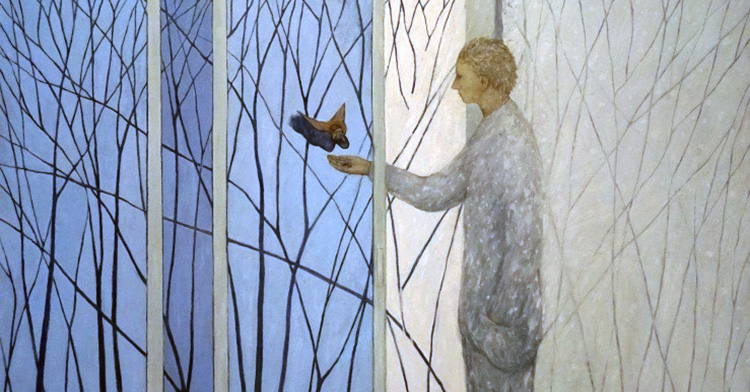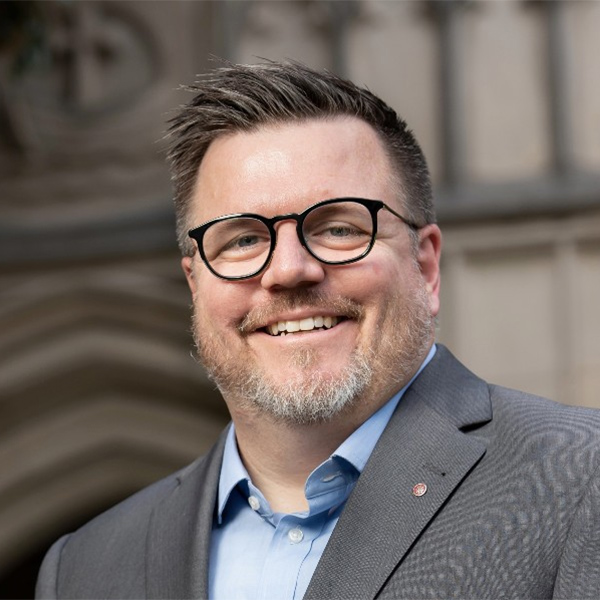Editor's note: A selection of Noelle York-Simmons photographs and interviews is online here.
People say the church is dying.
I have to admit, while I’ve heard this, I’ve never experienced it firsthand in any real or meaningful way. It is possible that I am just a Pollyanna or have my head in the sand, but I don’t think the church is dying. I just cannot or will not believe that. Not only do I have too much invested in my faith, but I have too much of myself invested in my community -- the community of my parish, the worldwide community of my denomination.
When I was offered a sabbatical opportunity, I became intrigued with exploring this idea of the death of the church. Soon after, I preached a sermon on Maundy Thursday about the institution of the Eucharist and how our hands, transformed by the acceptance of the body and the blood, become the next in a long line of hands that act as the hands of Christ.
This sermon gave me the idea for my sabbatical: I created a project that took me away from the safe cocoon of my living, thriving, active parish and out into this supposedly dying church.
I took a class to bring my photography skills into the digital age and set up a blog. For three months beginning in May 2011, I traveled with my husband, 4-year-old son and 2-year-old daughter to Virginia, North Carolina, Florida, New York City and San Francisco, taking pictures of the hands of Episcopalians accepting the body of Christ.
I asked those I photographed: “What is the most important thing you do with your hands?”
My travels took me to places ranging from a Latino congregation in a small stone church to the labyrinth of Grace Cathedral in San Francisco. I photographed about 35 pairs of hands and spoke with people including my son, Eli, and the Most Rev. Katharine Jefferts Schori, presiding bishop of the Episcopal Church. I wanted to find out what they did once they went out “into the world to love and serve the Lord.”
What did they do with those hands?
A self-proclaimed “tinkerer” described how he hand-molds the church’s altar candles. A preteen girl told me she uses her hands to pray for her brother who is struggling in college. A hairstylist sees her job as a ministry and gift from the Holy Spirit. A retired schoolteacher volunteers in an urban AIDS clinic.
Most people jumped at the opportunity to tell me their stories. While some stories were shorter than others, no one turned me down and no one had any problem understanding or answering the question. In the hands of these committed Christians, the church is far from dying. Vocation and faith are connected. God is present and very much alive.
One of my favorite congregational visits was to St. Andrew’s Episcopal Church in Virginia. I entered that parish a little biased, since the rector and his family are close friends of mine. I was welcomed at St. Andrew’s with joy and affection, instantly made to feel at home in that gentle, happy community.
It was there I met Dot, who has made a full and long life out of being a mother and church volunteer. Her 90-year-old hands are as beautiful as her impeccable manners. My interview with Dot confirmed for me what I have thought for a while: the church still feeds those who are hungry for what it is serving. And it still has hands like Dot’s to make the feeding happen.
The last church I visited was Holy Comforter Episcopal Church, right near my home. Holy Comforter is a unique congregation, a longtime mission of our diocese that has a large population of people with significant mental illness. I find it equal parts scary and holy. Many of the people who worship at Holy Comforter are unpredictable in their behavior, speech, even personal hygiene. I never really know what to expect when I arrive. It takes me a while to get settled in. But then the Holy Spirit shows up, just like the Holy Spirit shows up everywhere. We sing and pray together, and we share the Meal together.
Taking pictures at Holy Comforter was a hoot. Nineteen people came forward. Nineteen! I got some good shots and some great interviews. Among my favorites were the man who told me that the most important thing he does with his hands is “wash them” and the one who told me, with a twinkle, that he holds hands with his girlfriend.
Worship at Holy Comforter is still frightening and unpredictable, but a little less so for the commonality that we all share -- the Eucharist, the bread, broken for all of us, those who are obviously broken ourselves and those who put up a good show of pretending not to be. And then, after that bread is broken, we all remember (re-member) that we are beloved, broken bits and all. The church is alive and well in that brokenness.
I do not want to suggest that my whole sabbatical was spent dashing about from church to church, snapping photos and getting into people’s heads. A sabbatical is, at its best, for rest, and that is a large part of what I did. I walked the labyrinth at Grace Cathedral all alone for an hour. I wandered Manhattan just for fun. I spent time on silent retreat at a monastery in northern California. I ran for miles and miles and miles. These were necessary times for me, luxurious in their solitude. They were rest and rejuvenation in order to reinvigorate me for the work that my own hands do at home and in church.
In contrast to that alone time was the precious time I spent with my family. My kids were 4 and 2 at the time, ages when traveling can be equal parts nightmare and dreamy adventure. Spending good, lazy time with them helped me to remember that they are not only the church’s future; they are also its present.
No resource we can pour into making these little ones into believers, lovers of the gospel and defenders of what is good and holy, is wasted. Their Christian education is of vast importance to me. There are at least four R’s in our house: reading, ’riting, ’rithmetic and religion.
At one point, I photographed my son’s hands and asked him the requisite question. Little preacher’s kid that he is, he pressed those small hands together up under his chin and said, very piously but seriously, “I like to fold up my hands to pray. That’s important.” Then he walked away.
My husband looked at me and said, “You can’t print that -- it sounds like a plant.” About 10 seconds later, Eli happily bounced back and practically shouted in my face, “Oh! And ride my bike, too.” It is in these hands that the church will grow.
I am not so naive to think that there is neither room nor need for change. Just like people, the institutions that make up the Christian world need to have the flexibility to answer the needs of culture; we need to go out and meet people where they are. I have no magic bullet for how this should happen. Ink has been spilled by far greater theologians than I on how the body, the church, can grow to meet the needs of this hurting world.
But.
In Dot and in Eli, in Holy Comforter and in each of us who carries the message of good news in our hands out into the world in thought and action, the church is not dying; it is very much alive. As leaders of the church, we must meet this vitality with flexibility and imagination, holding the tentative hands, guiding the young ones, learning from the experienced ones. And then the church will not only live; it will grow.















